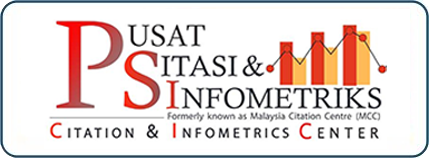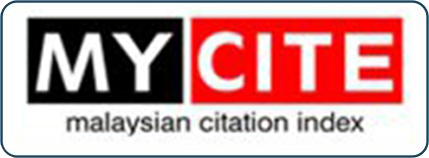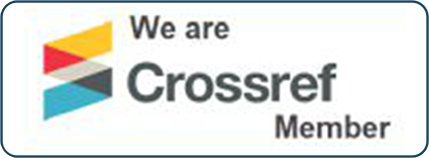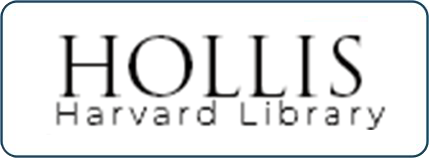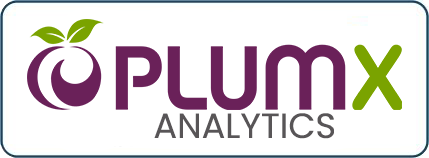Unveiling Takaful Subscriptions
Demographic Factors, Awareness and Financial Literacy in Kota Kinabalu City Centre Through Linear Regression Analysis
DOI:
https://doi.org/10.33102/jmifr.581Keywords:
Takaful subscriptions, demographic factors, awareness, financial literacyAbstract
This paper examines the factors that influence individuals in Kota Kinabalu City Centre, Sabah, to subscribe to Islamic Insurance (Takaful). The focus is on individual characteristics and financial literacy as potential factors. The data was collected from potential Takaful customers through the distribution of questionnaires and a statistical analytical approach was used to examine the relationships between demographic characteristics, awareness, financial literacy and Takaful subscription rates. The findings of this study challenged common assumptions, revealing that awareness and financial literacy significantly influence Takaful subscriptions. In contrast, demographic factors appear to have a limited influence. The results indicate that higher levels of awareness and financial literacy are associated with increased subscription rates. This highlights the importance of educational efforts and awareness campaigns for Takaful products. Moreover, this study has practical implications for the Takaful sector and suggests the need for targeted strategies to boost awareness and financial literacy among potential customers. In addition, this study contributes to a broader scope of Islamic finance and insurance study by shedding light on consumer behaviour in ethical and Shariah-compliant financial services. In conclusion, this research contributes to a better understanding of the determinants influencing the subscription to Takaful products among individuals in Kota Kinabalu City Centre, Sabah. It also provides new insights into industry practices and policy development. Furthermore, the findings pave the way for further research on the evolving landscape of ethical and Shariah-compliant financial services, as well as the dynamics of subscription behaviour.
Downloads
References
Abdullah, S. (2012). Risk Management via takaful from a perspective of Maqasid of Shariah. Procedia - Social and Behavioral Sciences, 65, 535–541. https://doi.org/10.1016/j.sbspro.2012.11.161
Abdullah, S., & Furqani, H. (2012). The objectives of shariah (maqasid shariah) in takaful: Highlighting the noble practice. International Conference on Management, Economics and Finance (ICMEF 2012).
Abu Kasim, N. A. (2012). Disclosure of Shariah compliance by Malaysian takaful companies. Journal of Islamic Accounting and Business Research, 3,(1), 20–38. https://doi.org/10.1108/17590811211216041
Adil, M., Singh, Y., & Ansari, M. S. (2022). How financial literacy moderate the association between behaviour biases and investment decision? Asian Journal of Accounting Research, 7(1), 17–30. https://doi.org/10.1108/AJAR-09-2020-0086
Ahmad, N. H., Rahman, A. A., & Rani, N. F. A. (2017). Maqasid al-Syari’ah dalam penawaran produk takaful wanita: Kajian di pengedalian takaful terpilih. Jurnal Syariah, 25(1), 23–50. https://doi.org/10.22452/js.vol25no1.2
Al Mahi, A. S. M. M., Sim, C. S., & Hassan, A. F. S. (2017). Religiosity and demand for takaful (Islamic Insurance): A preliminary investigation. International Journal of Applied Business and Economic Research, 15(24), 485–499. https://www.researchgate.net/publication/322401800_Religiosity_and_demand_for_takaful_Islamic_Insurance_A_preliminary_investigation
Anshika, Singla, A., & Mallik, G. (2021). Determinants of financial literacy: Empirical evidence from micro and small enterprises in India. Asia Pacific Management Review, 26(4), 248–255. https://doi.org/10.1016/j.apmrv.2021.03.001
Arifin, J., Yazid, A. S., & Hussin, M. R. (2014). Demand of family takaful in Malaysia: critical determinant factors examined. International Review of Management and Business Research, 3(2), 982–992. https://www.researchgate.net/publication/264497614_International_Review_of_Management_and_Business_Research_Demand_of_Family_Takaful_in_Malaysia_Critical_Determinant_Factors_Examined
Arifin, J., Yazid, A. S., & Sulong, Z. (2013). A conceptual model of literature review for family takaful (Islamic Life Insurance) demand in Malaysia. International Business Research, 6(3), 210–216. https://doi.org/10.5539/ibr.v6n3p210
Aris, Y. B. B. W., Sahak, S., & Shaadan, N. (2009). A relook into awareness, perceptions, barriers and future insurance needs: A case study of takaful and the Malays. Conference of the International Journal of Arts and Sciences, 1(19), 10–21. https://oarr.uitm.edu.my/id/eprint/23388/
Arshad, N. C., Halim, N. A., & Irijanto, T. T. (2020). Measuring sustainability of takaful performance in Malaysia. International Journal of Islamic Economics and Finance Research, 3(1), 2–13. https://ijiefer.uis.edu.my/ircief/article/view/8
Bank Negara Malaysia. (2012). Shariah standard on mudarabah. Islamic Banking and Takaful Department, 1–19. https://www.islamicfinance.com/wp-content/uploads/2015/01/shariah_std_mudarabah.pdf
Bank Negara Malaysia. (2012). The Principles and Practices of Shariah in Islamic Finance: Shariah Standard on Mudarabah. https://www.islamicfinance.com/wp content/uploads/2015/01/shariah_std_mudarabah.pdf
Bank Negara Malaysia. (2020). The Shariah Advisory Council of Bank Negara Malaysia (SAC) Ruling on Ar-Rahnu Product Proposal based on Tawarruq. https://www.bnm.gov.my/-/ruling-of-the-shariah-advisory-council-sac-of-the-bank-negara-malaysia-at-its-198th-and-199th-meeting-1
Bank Negara Malaysia. (2022). Annual Report 2022. https://www.bnm.gov.my/publications/ar2022
Bank Negara Malaysia. (2022). Financial Sector Blueprint 2022-2026. The Central Bank of Malaysia. https://www.bnm.gov.my/documents/20124/5915429/fsb3_en_book.pdf
Bank Negara Malaysia. (2022). Financial Sector Blueprint 2022-2026. https://www.bnm.gov.my/documents/20124/5915429/fsb3_en_book.pdf
Bank Negara Malaysia. (2023). Rates & Statistics. https://www.bnm.gov.my/rates-statistics
Bank Negara Malaysia. (2023). Rates & Statistics. https://www.bnm.gov.my/rates-statistics
Bateman, H., Gerrans, P., Thorp, S., & Zeng, Y. (2020). Life insurance: Decision states, financial literacy and the role of personal values. Network for Studies on Pensions, Aging and Retirement. https://www.netspar.nl/wp-content/uploads/P20200125_DP001_Thorp.pdf
Bauhoff, S., Carman, K., & Wuppermann, A. (2019). Financial Literacy and Consumer Choice of Health Insurance: Evidence from Low-Income Populations in the United States. RAND Corporation. https://doi.org/10.7249/WR1013
Bernama. (2023). MTA Launches Race4Cover Campaign to increase takaful products awareness. Bernama. https://www.bernama.com/en/general/news.php?id=2161750
Ćurak, M., Pepur, S., & Kovač, D. (2020). Does financial literacy make the difference in non-life insurance demand among european countries? Ekonomski Pregled, 71(4), 359–381. https://doi.org/10.32910/ep.71.4.3
Dalkilic, N., & Kirkbesoglu, E. (2015). The role of financial literacy on the development of insurance awareness. International Journal of Economics and Finance, 7(8), 272–280. https://doi.org/10.5539/ijef.v7n8p272
Damit, M. R. M., & Mohammed, R. @ U. B. (2024). A descriptive study of demographic factors and takaful subscription in Kota Kinabalu Sabah based on the Theory of Planned Behaviour. International Student Conference on Business, Education, Economics, Accounting and Management (ISC-BEAM), 1(1), 706–723. https://doi.org/10.21009/ISC-BEAM.011.50
Dean, D. H. (2004). Perceptions of the ethicality of consumer insurance claim fraud. Journal of Business Ethics, 54, 67–79. https://doi.org/10.1023/B:BUSI.0000043493.79787.e6
Department of Statistics Malaysia. (2023). Official Portal. Ministry of Economy Department of Statistics Malaysia Official Portal. https://www.dosm.gov.my/portal-main/landingv2
Dinc, Y., Çetin, M., Bulut, M., & Jahangir, R. (2021). Islamic financial literacy scale: an amendment in the sphere of contemporary financial literacy. ISRA International Journal of Islamic Finance, 13(2), 251–263. https://doi.org/10.1108/IJIF-07-2020-0156
Flanagan, P., Primeaux, P. D., & Ferguson, W. L. (2007). Introduction: Insurance ethics for a more ethical world. Emerald Group Publishing Limited, 7, 1–7. https://doi.org/10.1016/S1529-2096(06)07001-5
Goyal, K., & Kumar, S. (2021). Financial literacy: A systematic review and bibliometric analysis. International Journal of Consumer Studies, 45(1), 80–105. https://doi.org/10.1111/ijcs.12605
Gustina, & Abdullah, N. I. (2019). Analysis of demand for family takaful and life insurance: A comparative study in Malaysia. Journal of Islamic Economics, Banking and Finance, 8(4), 67–86. https://www.researchgate.net/publication/336892949_Analysis_of_Demand_for_Family_Takaful_and_Life_Insurance_A_Comparative_Study_in_Malaysia
Hakim, L., & Munir, M. S. (2023). Takaful industrial research developments: a bibliometric analysis on the scopus database. IQTISHADUNA: Jurnal Ilmiah Ekonomi Kita, 12(1), 66–79. https://doi.org/10.46367/iqtishaduna.v12i1.1020
Harnett, S. (2019). Financial and health insurance literacy: A necessary addition to health literacy programming. Journal of Consumer Health on the Internet, 23(2), 168–174. https://doi.org/10.1080/15398285.2019.1614844
Hashim, M. F. A. M., & Halim, M. N. A. (2018). The tendency to subscribe takaful: A proposed conceptual framework. International Journal of Academic Research in Business and Social Sciences, 7(12), 934–943. https://doi.org/10.6007/IJARBSS/v7-i12/3723
Hassan, R., Salman, S. A., Kassim, S., & Majdi, H. (2018). Awareness and knowledge of takaful in Malaysia: A survey of malaysian consumers. International Journal of Business and Social Science, 9(11). https://doi.org/10.30845/ijbss.v9n11p6
Hastings, J. S., Madrian, B. C., & Skimmyhorn, W. L. (2013). Financial literacy, financial education and economic outcomes. Annual Review of Economics, 5(1), 347–373. https://doi.org/10.1146/annurev-economics-082312-125807
HTT Network. (2023). Takaful: The ethical and shariah-compliant alternative to conventional insurance. https://holierthantao.com/2023/03/31/takaful-the-ethical-and-shariah-compliant-alternative-to-conventional-insurance/
Hung, A., Parker, A. M., & Yoong, J. (2009). Defining and measuring financial literacy [Working paper]. RAND Corporation. https://doi.org/10.2139/ssrn.1498674
Ingale, K. K., & Paluri, R. A. (2022). Financial literacy and financial behaviour: a bibliometric analysis. Review of Behavioural Finance, 14(1), 130–154. https://doi.org/10.1108/RBF-06-2020-0141
Ishak, N. S. (2020). Demand for Takaful and microtakaful in Malaysia [Doctoral dissertation, University of Arizona]. Sussex Research Online. https://sussex.figshare.com/articles/thesis/Demand_for_takaful_and_microtakaful_in_Malaysia/23477150
Ismail, N., Othman, A. A., Liyana, N., Yousop, M., Zarina, S., Din, M., Bakar, N. A., Khairul, M., Noh, A., & Shafi, R. M. (2013). A study of the awareness level of takaful products among micro enterprises in Malaysia. Journal of Modern Accounting and Auditing, 9(11), 1535–1542. https://www.researchgate.net/publication/286151152_A_Study_of_the_Awareness_Level_of_Takaful_Products_Among_Micro_Enterprises_in_Malaysia
Jetawat, J. H., & Mistry, S. H. (2017). Demographic analysis of factors influencing purchase of life insurance products in Gujarat. International Journal of Engineering Development and Research, 5(3), 1087–1094. https://rjwave.org/ijedr/papers/IJEDR1703153.pdf
Josiassen, A., Assaf, A. G., & Karpen, I. O. (2011). Consumer ethnocentrism and willingness to buy: Analyzing the role of three demographic consumer characteristics. International Marketing Review, 28(6), 627–646. https://doi.org/10.1108/02651331111181448
Juhari, J., Rahim, N. A., Masdek, N. R. N. M., & Husin, N. (2022). The role of awareness and knowledge toward motor takaful purchase intention among young generation. International Journal of Academic Research in Business and Social Sciences, 12(11), 306–314. https://doi.org/10.6007/IJARBSS/v12-i11/15224
Jusoh, W. N. H. W., & Noreffendi, A. D. (2022). The awareness of education takaful among consumers in Kuching, Sarawak. International Journal of Islamic Economics and Finance Research, 5(1), 90–103. https://doi.org/10.53840/ijiefer82
Kamaruddin, A. A., Duasa, J., Kassim, S., & Imon, R. A. (2023). Takaful-growth nexus before and after the implementation of IFSA 2013: Empirical Evidence From Malaysia. International Journal of Islamic Banking and Finance Research, 11(1), 50–60. https://doi.org/10.46281/ijibfr.v11i1.2029
Kasim, N. A. A. (2012). Disclosure of Shariah compliance by Malaysian takaful companies. Journal of Islamic Accounting and Business Research, 3(1), 20–38. https://doi.org/10.1108/17590811211216041
Kassim, Z. A. M. (2005). Takaful: The Islamic way of insurance. https://www.academia.edu/32504959/takaful_the_islamic_way_of_insurance
Kaunain, F., & Akhtar, S. N. (2016). Economic Determinant of family takaful : Evidence from Pakistan. Acta Islamica, 2(4), 7–41. https://doi.org/10.12816/0037640
Kazaure, M. A. (2019). Extending the theory of planned behavior to explain the role of awareness in accepting Islamic health insurance (takaful) by microenterprises in northwestern Nigeria. Journal of Islamic Accounting and Business Research, 10(4), 607–620. https://doi.org/10.1108/JIABR-08-2017-0113
Konak, F., & Demir, Y. (2023). Bibliometric analysis on Islamic insurance (Takaful). Hitit Theology Journal, 22(1), 11–46. https://doi.org/10.14395/hid.1232415
Kuan, S. (2023, March 7). MTA launches Takaful-4-All campaign to assist flood victims. New Straits Times. https://www.nst.com.my/news/nation/2023/03/886649/mta-launches-takaful-4-all-campaign-assist-flood-victims
Kubitza, C., Hofmann, A., & Steinorth, P. (2019). Financial literacy and precautionary insurance [Working Paper]. International Center for Insurance Regulation, Goethe University Frankfurt. https://doi.org/10.2139/ssrn.3346477
Lin, C., Hsiao, Y.-J., & Yeh, C.-Y. (2017). Financial literacy, financial advisors and information sources on demand for life insurance. Pacific-Basin Finance Journal, 43, 218–237. https://doi.org/10.1016/j.pacfin.2017.04.002
Lin, X., Bruhn, A., & William, J. (2019). Extending financial literacy to insurance literacy: A survey approach. Accounting & Finance, 59(S1), 685–713. https://doi.org/10.1111/acfi.12353
Lusardi, A., & Messy, F.-A. (2023). The importance of financial literacy and its impact on financial wellbeing. Journal of Financial Literacy and Wellbeing, 1(1), 1–11. https://doi.org/10.1017/flw.2023.8
Lusardi, A., & Mitchell, O. S. (2014). The economic importance of financial literacy: Theory and evidence. journal of economic literature, 52(1), 5–44. https://doi.org/10.1257/jel.52.1.5
Lusardi, A., & Mitchelli, O. S. (2007). Financial Literacy and Retirement Preparedness: Evidence and Implications for Financial Education. Business Economics, 42(1), 35–44. https://link.springer.com/article/10.2145/20070104#citeas
Maduku, D. K., & Mbeya, S. (2024). Understanding family takaful purchase behaviour: the roles of religious obligation and gender. Journal of Financial Services Marketing, 29(2), 440–458. https://doi.org/10.1057/s41264-023-00213-z
Mahdzan, N. S., & Tabiani, S. (2013). The impact of financial literacy on individual saving: An exploratory study in the malaysian context. Transformations in Business and Economics, 12(1), 41–55. http://www.transformations.knf.vu.lt/28/se28.pdf
Mahdzan, N. S., & Victorian, S. M. P. (2013). The determinants of life insurance demand: A focus on saving motives and financial literacy. Asian Social Science, 9(5), 274–284. https://doi.org/10.5539/ass.v9n5p274
Mansor, N., Bashir Ahmad, S. A., Abu Bakar, S., & Ismail, I. (2014). A demographic analysis on customer acceptance towards Islamic pawn broking in malaysia. Asian Social Science, 10(2), 27–36. https://doi.org/10.5539/ass.v10n2p27
Masud, H. (2011). Takaful: An innovative approach to insurance and islamic finance. University of Pennsylvania Journal of International Economic Law, 32(4), 1133–1164. https://scholarship.law.upenn.edu/cgi/viewcontent.cgi?article=1093&context=jil
Maysami, R. C., & Kwon, W. J. (1999). An analysis of Islamic Takaful Insurance: A cooperative insurance mechanism. Journal of Insurance Regulation, 18(1), 109–132. https://naic.soutronglobal.net/Portal/Public/en-GB/RecordView/Index/315
Md Hashim, M. F. A., & Abd Halim, M. N. (2017). The tendency to subscribe to Takaful: A proposed conceptual framework. Proceedings of the 4th International Conference on Business and Economics Research (4th ICBER), 1–10. Universiti Utara Malaysia.
Mehboob Shaikh, I., & Amin, H. (2024). Customers’ willingness to choose family takaful: extending the theory of interpersonal behaviour. Journal of Islamic Accounting and Business Research, 15(1), 100–118. https://doi.org/10.1108/JIABR-04-2022-0113
Mohamad, S. F. S., Alhabshi, S. O., & Lahsasna, A. (2018). Shariah non-compliance risks in shared and outsourced services of takaful operators. International Journal of Accounting, Finance and Business, 3(11), 119–133. https://www.researchgate.net/publication/331088050_Shariah_NonCompliance_Risks_In_Shared_and_Outsourced_Services_of_Takaful_Operators
Morden, Z. . (2023, June 22). Ministry announces Rahmah insurance, takaful packages from Allianz and Etiqa. Malay Mail. https://www.malaymail.com/news/malaysia/2023/06/22/ministry-announces-rahmah-insurance-takaful-packages-from-allianz-and-etiqa/75730
Murugesan, R., & Manohar, V. (2020). Financial literacy - A determinant of investment in health insurance. Shanlax International Journal of Commerce, 8(3), 33–38. https://doi.org/10.34293/commerce.v8i3.2009
Musa, A. H., Baharuddin, F. N., Rosle, A. N., Ibrahim, S. S., & Syed Noh, S. N. (2022). The role of social media and religious awareness in purchasing decision on takaful insurance: A conceptual paper. International Journal of Academic Research in Business and Social Sciences, 12(6), 630–636. https://doi.org/10.6007/IJARBSS/v12-i6/13996
Nasir, R., & Rahman, A. A. (2022). Do tourists have better protection by taking travel takaful? a comparison in Malaysia. The Journal of Muamalat and Islamic Finance Research, 19(2), 72–87. https://doi.org/10.33102/jmifr.v19i2.462
Nawi, F. A. M., Daud, W. M. N. W., Ghazali, P. L., Yazid, A. S., & Shamsuddin, Z. (2018). Islamic financial literacy: A conceptualization and proposed measurement. International Journal of Academic Research in Business and Social Sciences, 8(12), 629–641. https://doi.org/10.6007/IJARBSS/v8-i12/5061
Noor, N., Batool, I., & Arshad, H. M. (2020). Financial literacy, financial self-efficacy and financial account ownership behavior in Pakistan. Cogent Economics & Finance, 8(1), 1–17. https://doi.org/10.1080/23322039.2020.1806479
O’Connor, G. E., & Kabadayi, S. (2020). Examining antecedents of health insurance literacy: The role of locus of control, cognitive style and financial knowledge. Journal of Consumer Affairs, 54(1), 227–260. https://doi.org/10.1111/joca.12266
Odierno, H. S. (2012). Investments in Takaful. In S. O. Gonulal (Ed.), Takaful and Mutual Insurance: Alternative Approaches to Managing Risks (pp. 113–127). World Bank. https://doi.org/10.1596/978-0-8213-9724-4
Othman, M. H. (2015). Takaful: realities and challenges. Institutions and Economies, 7(2), 187–190. https://ijie.um.edu.my/index.php/ijie/article/view/5015/2853
Othman, M. H. (2022). Students’ understanding towards the objectives and concepts of takaful. International Journal of Academic Research in Business and Social Sciences, 12(8), 662–670. https://kwpublications.com/papers_submitted/12318/students-understanding-towards-the-objectives-and-concepts-of-takaful.pdf
Pierce, G. (2003). Multiple regression and mediation analyses using SPSS. Psychology 305, 1–8. https://academics.hamilton.edu/documents/SPSS_HMR_HO.pdf
Qadri, H. M.-U.-D., Ali, H., Jafar, A., Tahir, A. U. M., & Abbasi, M. A. (2024). Exploring the hot spots and global trends in Takaful research through bibliometric analysis based on Scopus database (2001-2022). Journal of Islamic Accounting and Business Research, 15(2), 291–305. https://doi.org/10.1108/JIABR-02-2022-0055
Qian, Y. H., & Darman, H. (2023). Acceptance level of takaful insurance products among non-Muslims in Malaysia. E3S Web of Conferences, 389, 1–13. https://doi.org/10.1051/e3sconf/202338909038
Rahman, Z. A. (2009). takaful potential demand and growth. Journal of King Abdulaziz University-Islamic Economics, 22(1), 171–188. https://citeseerx.ist.psu.edu/document?repid=rep1&type=pdf&doi=22a2d43cb1c7f4946bdfa1e920a9d6d5ac4c9514
Rahman, Z. A., Yusof, R. M., & Bakar, F. A. (2008). Family Takaful: Its role in social economic development and as a savings and investment instrument in Malaysia. Jurnal Syariah, 16(1), 89–105. https://ejournal.um.edu.my/index.php/JS/article/view/22778/11322
Redzuan, H. (2014). Analysis of the demand for life insurance and family Takaful: The ARDL modeling [Doctoral dissertation, Universiti Teknologi MARA]. UiTM Institutional Repository. https://ir.uitm.edu.my/id/eprint/43355/
Rehman, A. Ur., Aslam, E., Muhammad, R. S., Aslam, M., Iqbal, A., & Shabbir, M. S. (2023). Consumer awareness and knowledge about takaful (Islamic Insurance): A Survey of Pakistan. Journal of Namibian Studies, 35(S1), 4101–4118. https://namibian-studies.com/index.php/JNS/article/view/4382/3032
Remli, N., Muda, M., & Rosman, R. (2018). Firms’ Characteristics: A preliminary study of family takaful demand in Malaysia. International Journal of Accounting, Finance and Business, 3(14), 1–14. https://www.researchgate.net/publication/328306137_firms’_characteristics_a_
preliminary_study_of_family_takaful_demand_in_malaysia
Saharuddin, D., Mufraini, M. A., Ghoni, A., Chusna, I., Mulazid, A. S., & Supriyono, S. (2023). Takaful funeral; an innovation for Islamic insurance product. International Journal of Islamic and Middle Eastern Finance and Management, 16(5), 1071–1087. https://doi.org/10.1108/IMEFM-04-2022-0157
Salleh, F., & Afthanorhan, A. (2018). Demographic factors of family takaful demand: A literature review. International Journal of Academic Research in Business and Social Sciences, 8(12), 613–621. https://doi.org/10.6007/IJARBSS/v8-i12/5060
Sekita, S., Kakkar, V., & Ogaki, M. (2022). Wealth, financial literacy and behavioral biases in japan: The effects of various types of financial literacy. Journal of the Japanese and International Economies, 64. https://doi.org/10.1016/j.jjie.2021.101190
Seman, J. A. (2021). Awareness and understanding of takaful al-ijtimai’: A descriptive study. In A. Ismai, S. Sulaiman, M. N. Musling, S. R. Mat, A. A. Rahman, H. ‘A. A. Thaidi, & N. R. S. M. Dali (Eds.), E-Prosiding Seminar Antarabangsa Islam dan Sains (pp. 987–1005). USIM Press. https://oarep.usim.edu.my/entities/publication/d3c473bf-211b-4c05-9eed-2df5cab0b62f
Senchenkov, N. P., & Tsygankova, A. N. (2021). The Interpretation of the ‘financial literacy’ concept. Cherepovets State University Bulletin, 3(102), 221–219. https://doi.org/10.23859/1994-0637-2021-3-102-17
Shah, B. A., & Sohail, N. (2015). Family takaful demand: Analysis of four important factors. City University Research Journal, 10(2), 228–252. https://cusitjournals.com/index.php/CURJ/article/view/353
Shaifuddin, S. A. M. (2020). A literature review: determinants for family takaful demand in Malaysia - breaking out of the shadow of conventional insurance. International Journal of Academic Research in Business and Social Sciences, 10(2), 748–757. https://doi.org/10.6007/ijarbss/v10-i2/6995
Sherif, M., & Azlina Shaairi, N. (2013). Determinants of demand on family Takaful in Malaysia. Journal of Islamic Accounting and Business Research, 4(1), 26–50. https://doi.org/10.1108/17590811311314276
Shrivastava, N., & Singh, R. P. (2017). Effect of consumer characteristics on purchase motives and attitude towards life insurance: Study in Punjab Region. Scholarly Research Journal for Interdisciplinary Studies, 4(35), 6421–6427. https://oaji.net/articles/2017/1174-1512215779.pdf
Soualhi, Y., & Shammari, A. A. R. Al. (2015). Indicators of takaful awareness among Kuwaitis. Journal of Islamic Banking and Finance, 3(2), 75–89. https://jibf.thebrpi.org/journals/jibf/Vol_3_No_2_December_2015/8.pdf
Stolper, O. A., & Walter, A. (2017). Financial literacy, financial advice and financial behavior. Journal of Business Economics, 87(5), 581–643. https://doi.org/10.1007/s11573-017-0853-9
Sukumaran, K. (2015). Financial Literacy - Concept and Practice. DAWN: Journal for Contemporary Research in Management.
Sulaiman, S. M., Dandago, A. A., Muhammad, M. A., & Sabiu, T. T. (2020). Determinants of takaful patronage among entrepreneurs in Sabon Gari Market, Kano State, Nigeria. Journal of Accounting Research, Organization and Economics, 3(3), 238–253. https://doi.org/10.24815/jaroe.v3i3.17757
Swartz, N. P. ;, & Coetzer, P. (2010). Takaful: An Islamic Insurance Instrument. Journal of Development and Agricultural Economics, 2(10), 333–339. https://www.casact.org/sites/default/files/2021-05/6I_Swartz.pdf
Syed Mohamad, S. M. N., Ismail, A. G., & Shahimi, S. (2018). Performance of full-fledged and window Islamic takaful operators: A Maqasid index approach. Journal of Muamalat and Islamic Finance Research, 15(1), 1–17. https://doi.org/10.33102/jmifr.v17i2.290
Taft, M. K., Hosein, Z. Z., & Mehrizi, S. M. T. (2013). The relation between financial literacy, financial wellbeing and financial concerns. International Journal of Business and Management, 8(11), 63–75. https://doi.org/10.5539/ijbm.v8n11p63
Tennyson, S. (2011). Consumers’ insurance literacy: Evidence from survey data. Financial Services Review, 20(3), 165–179. https://www.researchgate.net/profile/Sharon-Tennyson/publication/267094407_Consumers’_Insurance_Literacy_Evidence_from_Survey_Data/links/5c90058845851564fae6c36b/Consumers-Insurance-Literacy-Evidence-from-Survey-Data.pdf
Tripepi, G., Jager, K. J., Dekker, F. W., & Zoccali, C. (2008). Linear and logistic regression analysis. Kidney International, 73(7), 806–810. https://doi.org/10.1038/sj.ki.5002787
Visser, H. (2012). Visser, H. (2012). Islamic finance: Aims, claims and the realities of the market place. In A. Rexha, & S. Badiani (Eds.), Ethical Investment Study: Social Responsibility for the Gulf Investment (pp. 25–38). Arab Financial Forum. https://research.vu.nl/en/publications/islamic-finance-aims-claims-and-the-realities-of-the-market-place
Wahab, N. A., & Bunyamin, M. (2023). The impact of financial literacy on financial risk tolerance: mediating role of financial behavior. Global Business and Management Research: An International Journal, 15(2s), 168–182. http://www.gbmrjournal.com/pdf/v15n2s/V15N2s-13.pdf
Yakob, R., B.A.M, H.-S., & Hisham, N. H. B. (2019). Demographic analysis towards the understanding of Education Takaful (Islamic Insurance) Plan. Malaysian Journal of Society and Space, 15(4), 92–105. https://doi.org/10.17576/geo-2019-1504-07
Yar, A., Kaunain, F., & Akhtar, S. (2014). Macro economic determinants of family takaful demand: Evidence from Pakistan. Macro Economic Variables & Takaful, 1–22. https://doi.org/10.2139/ssrn.2482278
Yazid, A. S., Arifin, J., Hussin, M. R., & Wan Daud, W. N. (2012). Determinants of family takaful (islamic life insurance) demand: A conceptual framework for a malaysian Study. International Journal of Business and Management, 7(6), 115–127. https://doi.org/10.5539/ijbm.v7n6p115
Yusoh, M. P., Ismail, N. I., Hua, A. K., & Kumalah, M. J. (2022). Tourist selection factors on selected service sectors when visiting the city of Kota Kinabalu, Sabah. Journal of Tourism, Hospitality and Environment Management, 7(30), 39–48. https://doi.org/10.35631/JTHEM.730004
Zhao, J., Han, X., Zheng, Z., Banegas, M. P., Ekwueme, D. U., & Yabroff, K. R. (2019). Is health insurance literacy associated with financial hardship among cancer survivors? Findings from a national sample in the United States. JNCI Cancer Spectrum, 3(4), 1–4. https://doi.org/10.1093/jncics/pkz061
Downloads
Published
How to Cite
Issue
Section
License
Copyright (c) 2025 Mohd Rozie Mohd Damit, Rozita @ Uji Mohammed

This work is licensed under a Creative Commons Attribution 4.0 International License.


